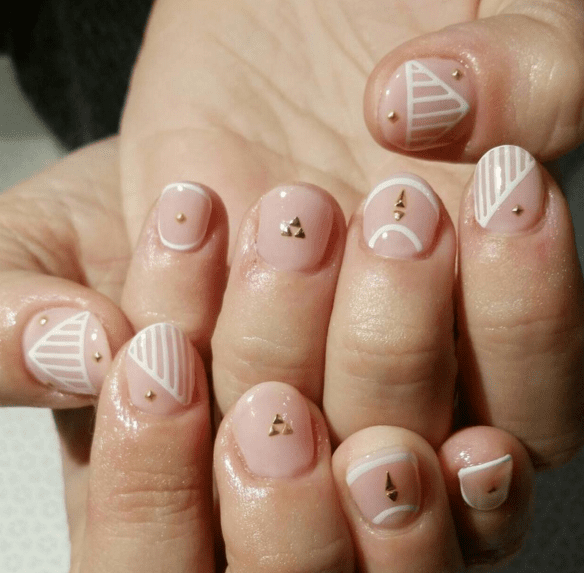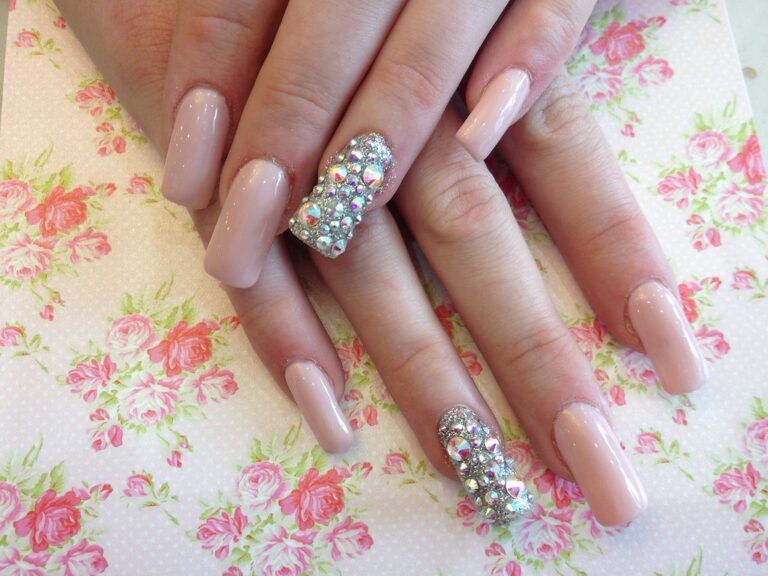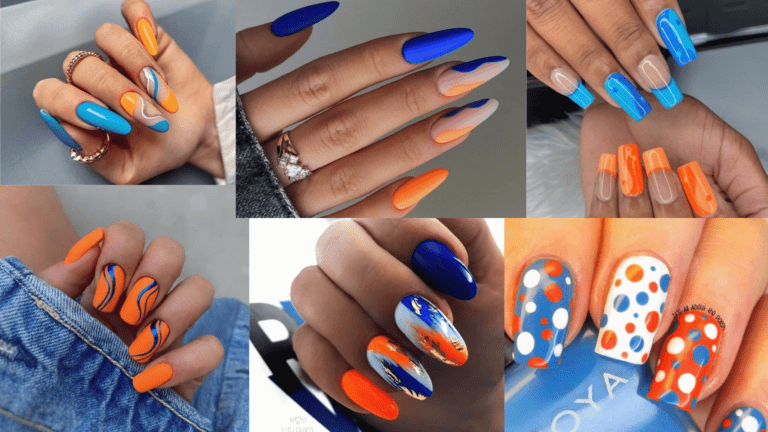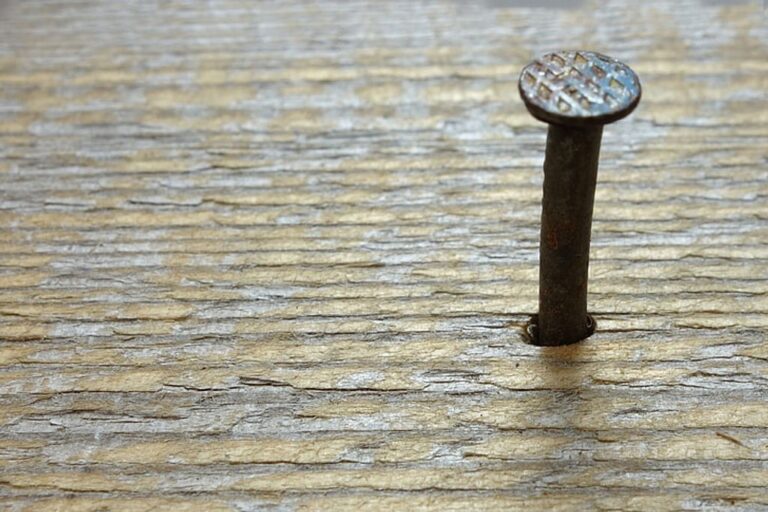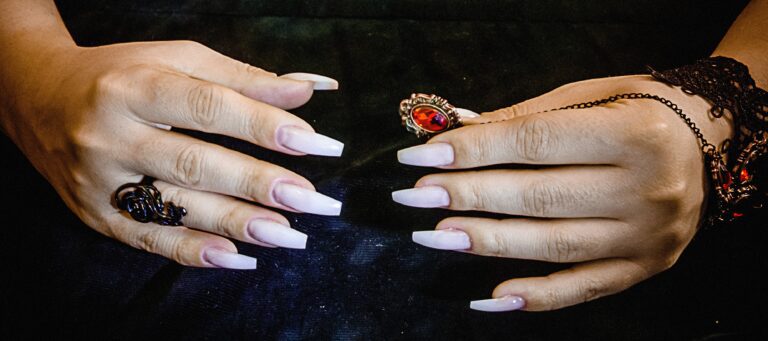“Brittle Mysteries: Why Nails Become Brittle Exposed”
Deprecated: mb_convert_encoding(): Handling HTML entities via mbstring is deprecated; use htmlspecialchars, htmlentities, or mb_encode_numericentity/mb_decode_numericentity instead in /home/u654140373/domains/nailinspire.com/public_html/wp-content/plugins/kadence-pro/dist/elements/elements-init.php on line 1267
Deprecated: Function utf8_decode() is deprecated in /home/u654140373/domains/nailinspire.com/public_html/wp-content/plugins/kadence-pro/dist/elements/elements-init.php on line 1275
In this article, we delve into the intriguing world of nail composition and the various factors that contribute to the brittleness of nails when exposed. From the science of nail structure to the impact of lifestyle and medical conditions, we unravel the mysteries behind brittle nails and explore solutions for maintaining nail integrity.
Key Takeaways
- Understanding the role of keratin in nail composition is crucial for addressing nail brittleness.
- Moisture and lipids play a significant role in maintaining nail health and preventing brittleness.
- Nutritional deficiencies, environmental assaults, and hormonal changes can contribute to brittle nails.
- Personal care products, occupational hazards, and stress can impact nail integrity and health.
- Medical conditions such as thyroid disorders, anemia, and fungal infections can be linked to brittle nails.
Unveiling the Science of Nail Composition

Keratin: The Building Block of Nails
Nails are composed primarily of keratin, a fibrous structural protein that also forms hair and the outermost layers of the skin. This protein provides strength and resilience to the nails, contributing to their protective function. The amino acid composition of keratin plays a crucial role in determining the characteristics of nails, with different types of keratin exhibiting varying levels of sulfur content. These variations influence the overall structure and properties of nails, making them adaptable to different environmental conditions and stressors. Understanding the composition of keratin is essential for comprehending the intricate nature of nail health and integrity.
The Role of Moisture and Lipids
The health and resilience of our nails are greatly influenced by their moisture and lipid content. Moisture is essential for maintaining the flexibility of the nail plate, while lipids serve as a protective barrier, preventing excessive water loss that can lead to brittleness. A balanced hydration level within the nail is crucial, as both dehydration and overhydration can cause nails to become fragile and prone to splitting.
Lipids, particularly certain types of fatty acids and ceramides, are integral to the nail’s structure. They fill the spaces between cells, acting like mortar in a brick wall, to provide strength and prevent breakage. The optimal ratio of these components is vital for nail integrity. For instance, a study has shown that the lipid content of a healthy nail plate follows a specific ratio of layers, suggesting a delicate balance is necessary for maintaining nail health.
Regular application of moisturizers and oils can help replenish lost moisture and lipids, ensuring nails remain strong and resilient. It’s important to select products that are specifically formulated for nail care, as they will contain the right concentration of ingredients to effectively penetrate the nail plate.
Tip: To maintain the ideal moisture and lipid balance in your nails, consider using products that contain hyaluronic acid or glycerin for hydration, and those with jojoba oil or shea butter for lipid replenishment.
Nail Structure: A Closer Look
The intricate architecture of our nails is not just for aesthetic appeal; it serves as a protective shield for the delicate tissues of our fingertips. At the core of this structure is keratin, a tough protein that provides strength and resilience. Nails are composed of several parts, each playing a pivotal role in overall nail health and function.
- The nail plate is the hard, translucent part of the nail, visible when looking at your hands or feet.
- The nail bed is the skin beneath the nail plate, which nourishes and supports it.
- Cuticles serve as a protective barrier at the base of the nail, preventing the entry of pathogens.
- The nail matrix, hidden under the cuticle, is where nail growth originates.
Tip: Regularly moisturizing the cuticle and nail bed can prevent brittleness and promote healthy nail growth.
Understanding the synergy between these components is essential for maintaining nail integrity. Disruptions in any part of the nail structure can lead to brittleness, making it crucial to recognize and address the signs of nail distress early.
Factors Contributing to Brittle Nails

Aging and Hormonal Changes
As we age, hormonal changes in the body can have a significant impact on the health of our nails. The decrease in estrogen levels can lead to reduced moisture retention in the nails, making them more prone to brittleness and breakage. Additionally, the natural aging process can affect the production of essential nail proteins, further contributing to nail fragility. It’s important to be mindful of these changes and adapt our nail care routines to address the specific needs of aging nails. Understanding the interplay between aging and hormonal changes is crucial for maintaining nail integrity and health.
Nutritional Deficiencies and Their Impact
Nutritional deficiencies can have a significant impact on the health of your nails. Iron, biotin, and calcium are some of the essential nutrients that play a crucial role in maintaining nail strength and resilience. Deficiencies in these nutrients can lead to brittle or cracked nails. It’s important to ensure that your diet includes a variety of foods rich in these nutrients to support healthy nail growth and integrity. Here are some key nutrients and their impact on nail health:
| Nutrient | Impact on Nail Health |
|---|---|
| Iron | Supports nail strength |
| Biotin | Promotes nail growth |
| Calcium | Enhances nail resilience |
It’s advisable to consult a healthcare professional if you suspect a nutritional deficiency may be affecting the health of your nails. Taking steps to address these deficiencies can contribute to improved nail health and integrity.
Environmental Assaults on Nail Health
Our nails are constantly exposed to a variety of environmental factors that can lead to brittleness and damage. Prolonged exposure to water, for instance, can strip nails of their natural oils, leading to dryness and weakness. Similarly, harsh chemicals found in cleaning products can also contribute to the deterioration of nail health.
Pollution and UV radiation from the sun are less obvious culprits that can cause oxidative stress on nails, making them more susceptible to brittleness. It’s important to protect nails by wearing gloves when using cleaning agents or when exposed to water for extended periods.
Preventive measures such as using nail hardeners and avoiding excessive exposure to water and chemicals can help maintain nail integrity. Here are some practical tips to shield your nails from environmental stressors:
- Wear protective gloves during household chores
- Apply a nail hardener or strengthener regularly
- Limit the use of nail polish removers containing acetone
- Keep nails moisturized with creams or oils
Tip: Always remember to give your nails a break from polish and treatments to allow them to recover and breathe.
The Impact of Lifestyle on Nail Integrity

The Effects of Personal Care Products
Personal care products, while designed to enhance the appearance of nails, can sometimes have the opposite effect. The frequent use of nail polish, removers, and treatments can strip nails of their natural oils, leading to brittleness and breakage. It’s essential to understand the balance between aesthetics and nail health.
- Nail polish removers, especially those containing acetone, are notorious for causing dryness. To mitigate this, opt for acetone-free formulas and limit usage.
- Overuse of nail hardeners can ironically lead to more fragile nails over time. These products should be used sparingly and as directed.
Tip: Always give your nails a break between applications of polish to allow them to recover and breathe.
When selecting nail care products, it’s crucial to read labels and understand the ingredients. Avoid harsh chemicals and look for products enriched with vitamins and moisturizers. Remember, the goal is to maintain both the beauty and the integrity of your nails.
Occupational Hazards: When Work Takes a Toll
Certain occupations expose individuals to conditions that can be detrimental to nail health. Prolonged exposure to water, harsh chemicals, or physical trauma can lead to brittle nails. For instance, healthcare workers frequently wash their hands, while cleaners and hairdressers often use strong detergents and solvents.
- Protective measures are essential* in mitigating these risks. Wearing gloves can serve as a barrier against damaging agents. Additionally, incorporating regular breaks to allow nails to recover and applying moisturizers can help maintain nail integrity.
Remember: Prevention is key. Simple steps like moisturizing and wearing protective gloves can significantly reduce the risk of nail damage in the workplace.
Stress and Nail Health: Understanding the Connection
The intricate relationship between stress and nail health is often underestimated. Chronic stress can lead to a disruption in the body’s hormonal balance, which in turn affects the growth and strength of nails. Prolonged exposure to stress hormones like cortisol can diminish the quality of keratin, the protein that constitutes the majority of the nail structure.
Stress-induced behaviors, such as nail-biting or neglecting nail care, can further exacerbate the condition of brittle nails. It’s crucial to recognize these habits and actively work towards mitigating their impact on nail health.
- Recognize and reduce stress triggers
- Develop healthy stress management techniques
- Maintain a consistent nail care routine
Remember, managing stress is not only beneficial for your mental well-being but also for maintaining strong and resilient nails.
Medical Conditions Linked to Brittle Nails

Thyroid Disorders and Nail Fragility
The thyroid gland plays a pivotal role in regulating numerous metabolic processes throughout the body, including those that affect nail health. An imbalance in thyroid hormone levels, particularly in conditions such as hypothyroidism, can lead to brittle nails. These nails may exhibit increased fragility, slow growth, and a tendency to become thin or separate from the nail bed.
Hypothyroidism is not the only thyroid condition that can impact nails; hyperthyroidism and other thyroid disorders can also cause changes in nail texture and strength. It is essential to recognize these symptoms as potential indicators of underlying thyroid issues.
- Increased nail fragility
- Slower nail growth
- Nail thinning
- Separation of the nail from the nail bed
Tip: If you notice significant changes in your nails, such as persistent brittleness or alterations in growth patterns, it may be worthwhile to consult a healthcare professional to rule out thyroid dysfunction.
Anemia and Nail Changes
Anemia, particularly iron-deficiency anemia, can have a noticeable impact on nail health. Individuals with anemia may observe their nails becoming brittle, spoon-shaped, or presenting with ridges. This condition, known as koilonychia, is often a telltale sign of iron deficiency.
Essential nutrients, including iron, are vital for the production of hemoglobin, the protein that carries oxygen in the blood. When the body lacks sufficient iron, not only does this affect overall health, but it also compromises the delivery of nutrients to the nail beds, leading to weakened nails.
Tip: A balanced diet rich in iron can help prevent anemia and maintain healthy nails. Foods such as red meat, leafy greens, and legumes are excellent sources of iron.
While anemia can be addressed with proper nutrition and supplements, persistent nail changes should be evaluated by a healthcare professional to rule out other underlying conditions.
Fungal Infections and Their Consequences
Fungal infections can have serious consequences for nail health. These infections, which can occur in people with a normal immune system, may lead to significant nail fragility and damage. It’s important to be aware of the signs of fungal infections and seek prompt treatment to prevent further complications. Here are some common symptoms of fungal nail infections:
- Thickened nails
- Discoloration of the nails
- Brittle or crumbly nails
- Distorted nail shape
If you notice any of these symptoms, it’s advisable to consult a healthcare professional for an accurate diagnosis and appropriate treatment. Early intervention can help prevent the progression of fungal infections and minimize their impact on nail health.
Navigating the World of Nail Care Solutions

Moisturizers and Oils: A First Line of Defense
Maintaining the integrity of our nails often begins with the simplest of routines: the regular application of moisturizers and oils. These products are essential in replenishing the natural oils that our nails lose on a daily basis, which can lead to dryness and brittleness. CND’s SolarOil, a cuticle oil praised by cosmetologists, has been recognized as a game-changer for those with damaged nails.
When selecting a nail moisturizer, it’s important to look for ingredients that mimic the nail’s natural moisture. Ingredients such as jojoba oil, vitamin E, and almond oil are known for their hydrating properties and can significantly improve nail flexibility and strength.
Tip: Consistency is key. Apply your chosen moisturizer or oil at least once a day, preferably at night, to allow for maximum absorption without interference from daily activities.
For those new to nail care, here’s a simple routine to start with:
- Clean your nails with a gentle, non-drying remover.
- Apply a small amount of moisturizer or oil to each nail.
- Massage the product into the cuticle and nail bed.
- Allow time for the product to fully absorb before engaging in other activities.
The Role of Supplements in Nail Care
Supplements play a crucial role in supporting nail health by providing essential nutrients. Biotin, also known as vitamin B7, is a key component in many nail care supplements. It promotes the strength and resilience of nails, contributing to their overall integrity. Other important nutrients found in supplements include B vitamins, zinc, and calcium, all of which are known to benefit nail health. These nutrients work synergistically to nourish and protect the nails, helping to combat brittleness and promote healthy growth. When choosing a supplement, it’s important to consider the specific needs of your nails and consult with experts in the nail care industry to gain valuable insights into the products.
Innovative Treatments and Protective Measures
In the quest for stronger, healthier nails, innovation plays a pivotal role. New treatments and protective strategies are constantly emerging, offering hope to those struggling with brittle nails. One such advancement is the development of nail strengtheners that contain bioactive ingredients known to enhance nail resilience. These formulations often include keratin or biotin, which can help to reinforce the nail’s natural structure.
Beyond topical treatments, protective measures are equally important. Wearing gloves during household chores can shield nails from harsh chemicals and excessive water exposure. Additionally, minimizing the use of nail polish remover, especially those containing acetone, can prevent further drying and weakening of the nails.
Remember: Consistency is key when it comes to nail care. Regular application of treatments and adherence to protective practices can lead to noticeable improvements over time.
Are you ready to take your nail care routine to the next level? At NAILinspire.com, we offer a comprehensive collection of nail care solutions to help you achieve the perfect manicure and pedicure. Whether you’re looking for nail art inspiration, nail care tips, or the latest trends in nail design, our online library has everything you need to elevate your nail game. With a wide range of tutorials, product reviews, and expert advice, NAILinspire.com is your go-to destination for all things nails. Visit us today and discover the ultimate online nail art design library that will inspire and empower you to express your unique style through your nails.
Frequently Asked Questions
Why do nails become brittle?
Nails can become brittle due to various factors such as aging, hormonal changes, nutritional deficiencies, and environmental assaults on nail health.
How can I improve nail integrity?
Improving nail integrity involves maintaining adequate moisture and lipid levels, using suitable personal care products, and adopting a healthy lifestyle.
Are there medical conditions that cause brittle nails?
Yes, medical conditions such as thyroid disorders, anemia, and fungal infections are linked to nail fragility and brittleness.
What role do supplements play in nail care?
Supplements can support nail health by providing essential nutrients and promoting overall well-being, but it’s important to consult a healthcare professional before taking them.
Do moisturizers and oils help with brittle nails?
Yes, moisturizers and oils can help improve nail flexibility and strength by replenishing moisture and nourishing the nails and cuticles.
How can occupational hazards affect nail health?
Occupational hazards, such as frequent exposure to chemicals or physical stress on the nails, can negatively impact nail health and contribute to brittleness.


